

Copyright 2012 by Carymax LLC. All rights reserved Photos John Uher for competition years 20002005 and 20092010. Photos Jeff Kaufman for 20062007, and Jim Brown for 2008. Published by John Wiley & Sons, Inc., Hoboken, New Jersey Published simultaneously in Canada No part of this publication may be reproduced, stored in a retrieval system, or transmitted in any form or by any means, electronic, mechanical, photocopying, recording, scanning, or otherwise, except as permitted under Section 107 or 108 of the 1976 United States Copyright Act, without either the prior written permission of the Publisher, or authorization through payment of the appropriate per-copy fee to the Copyright Clearance Center, Inc., 222 Rosewood Drive, Danvers, MA 01923, (978) 750-8400, fax (978) 646-8600, or on the web at www.copyright.com. Requests to the Publisher for permission should be addressed to the Permissions Department, John Wiley & Sons, Inc., 111 River Street, Hoboken, NJ 07030, (201) 748-6011, fax (201) 748-6008, or online at http://www.wiley.com/go/permissions. Limit of Liability/Disclaimer of Warranty: While the publisher and author have used their best efforts in preparing this book, they make no representations or warranties with respect to the accuracy or completeness of the contents of this book and specifically disclaim any implied warranties of merchantability or fitness for a particular purpose.
No warranty may be created or extended by sales representatives or written sales materials. The advice and strategies contained herein may not be suitable for your situation. You should consult with a professional where appropriate. Neither the publisher nor author shall be liable for any loss of profit or any other commercial damages, including but not limited to special, incidental, consequential, or other damages. For general information on our other products and services or for technical support, please contact our Customer Care Department within the United States at (800) 762-2974, outside the United States at (317) 572-3993 or fax (317) 572-4002. Wiley publishes in a variety of print and electronic formats and by print-on-demand.
Some material included with standard print versions of this book may not be included in e-books or in print-on-demand. If this book refers to media such as a CD or DVD that is not included in the version you purchased, you may download this material at http://booksupport.wiley.com. For more information about Wiley products, visit www.wiley.com. Design by Vertigo Design NYC Illustrations by Cheryl Grubbs Library of Congress Cataloging-in-Publication Data: Boyle, Tish. Plating for gold : a decade of desserts from the world and national pastry team championships / Tish Boyle. cm. cm.
Includes index. ISBN 978-1-118-05984-5 (cloth); ISBN 978-1-118-28106-2 (ebk.); ISBN 978-1-118-28107-9 (ebk.) 1. Desserts. 2. Pastry. Cookbooks. I. I.
Boyle, Tish II. Title. TX773.B694 2012 2011032552 To all the talented pastry chefs who were brave enough to put their reputations on the line and compete in the World and National Pastry Team Championships 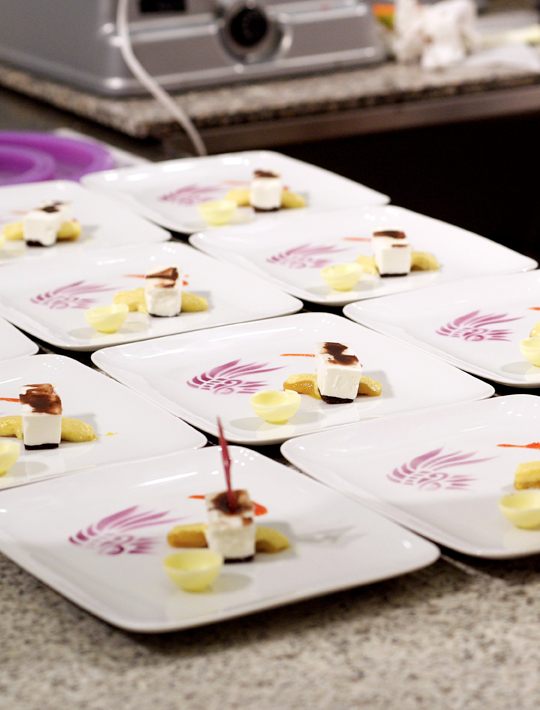 INTRODUCTION A PLATED DESSERT IS THE MEASURE OF A PASTRYCHEF. THE ARRANGING OF DESSERT COMPONENTS ON A PLATEA SLICE OF CAKE, AQUENELLE OF SORBET, A TWIRL OF TUILEIS AN ART FORM, AND ONE THAT REQUIRES ACOMBINATION OF TECHNICAL SKILL, A SENSE OF TIMING, AND AN EYE FOR DESIGN. Pastry chefs assemble plated desserts every day atrestaurants around the world, where, informally at least, they are judged bydiners. Here, on home turf, the chef is not under much pressure and ismotivated by the opportunity to gain recognition from critics and therestaurants clientele.
INTRODUCTION A PLATED DESSERT IS THE MEASURE OF A PASTRYCHEF. THE ARRANGING OF DESSERT COMPONENTS ON A PLATEA SLICE OF CAKE, AQUENELLE OF SORBET, A TWIRL OF TUILEIS AN ART FORM, AND ONE THAT REQUIRES ACOMBINATION OF TECHNICAL SKILL, A SENSE OF TIMING, AND AN EYE FOR DESIGN. Pastry chefs assemble plated desserts every day atrestaurants around the world, where, informally at least, they are judged bydiners. Here, on home turf, the chef is not under much pressure and ismotivated by the opportunity to gain recognition from critics and therestaurants clientele.
But put a formal spin on this ritual by having agroup of top pastry chefs as the judges analyzing every step of the process andscrutinizing every detail of the finished product, and then you have a pastrycompetition. This is real pressure, and its the type of pressure thatchallenges competitors to step out of their comfort zone, learn new tricks, andexceed their reach. This book focuses on Americas most prestigious pastrycompetition, the Pastry Team ChampionshipsWorld andNationalalong with fifty recipes for plated desserts from the top teams thathave competed over the years. These team competitions bring together the mosttalented pastry chefs in the world in a three-day whirlwind of sweat, skill,and high drama, with big money and pastry bragging rights as the ultimateprize. The championships were started in 1999 by Michael Schneider, the co-owner of a company that publishesDessert Professional, a pastry magazine for professionals. Having worked withpastry chefs for many years, Schneider came to consider them more as artiststhan craftsmen.
Instead of paint or clay, however, these artists use flour,sugar, eggs, and butter as their medium. Schneiders idea for thechampionships was inspired by the Coupe du Monde de laPtisserie, a global pastry competition that was founded in 1989 by PastryChef Gabriel Paillasson M.O.F. The Coupe, as itsknown, takes place every two years in Lyon, France, and brings together theworlds finest dessert experts in a highly demanding head-to-headcompetition. In the Coupe, each participating country is represented by a teamof three, and each team has ten hours in which to prepare a daunting menu thatincludes a plated dessert, three chocolate desserts, three frozen fruitdesserts, an ice sculpture, a chocolate sculpture, and a pulled sugarshowpiece. Technical, artistic, and performance skills are put to the test, andeach team is under considerable pressure, with the honor of their home countryat stake. As one might expect, countries that compete successfully in Olympicsports are usually represented at this event, including the United States,France, Switzerland, Japan, and Italy, to name a few.
For his competition, Schneider decided to take the idea of theCoupe du Monde to a new level, to create a pastry championship that was,unquestionably, the most challenging in the world. He opted to alternatenational and world competitions, with the national challenges held inodd-numbered years and the world competitions in even years. Whichever team wonthe national event would represent the U.S. at the world event the followingyear. The first competition took place in Beaver Creek, Colorado, in 1999. Fromthe beginning, competitorseven seasoned Coupe veteransfound the newchampionship to be a grueling test of will and skill.
In this competitionsformat, each team has thirteen hours over the course of two days to present thefollowing items:
- A plated dessert
- An entremets (cake)
- An entremets glac (frozen bombe)
- Three types of bonbons
- Three types of petites gteaux (small cakes)
- A sugar showpiece
- A chocolate showpiece
- An amenity piece composed of chocolate and sugar, on which to present the bonbons
Scoring is based on a point system, with 40 percent of thetotal score determined by taste, 30 percent by showpieces, and 30 percent byhow cleanly and efficiently each team works. Each team has two judgesrepresenting them. At the end of the thirteen hours, when the final whistleblows and all work stops, each team has a half hour to transport their work,which can include huge sugar and chocolate showpieces, from their kitchen tothe presentation table. This can be a stressful maneuver, a time when disastercan strike and dreams can shatter. At the 2003 National Pastry TeamChampionship, for example, Pastry Chef Chris Hanmer created one of the mostmagnificent sugar pieces anyone had ever seen. Just as Hanmer was about toplace his six-foot-tall, Phantom of the Operainspired piece on thepresentation table, he accidently dipped it forward a tiny bit.





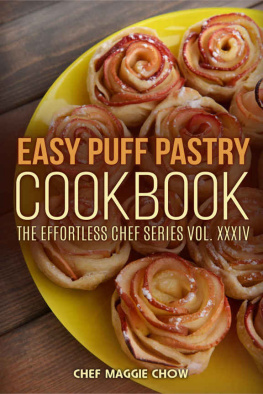
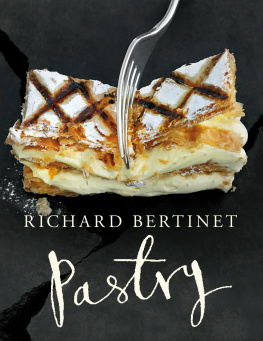
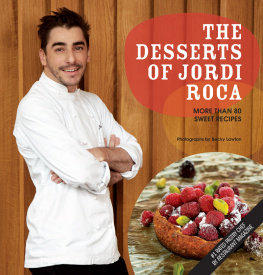


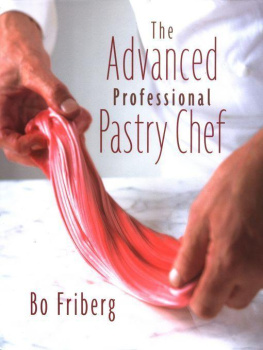
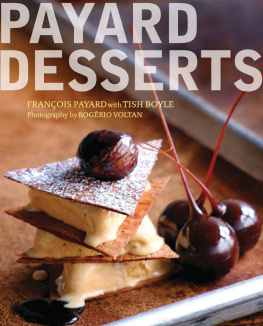

 Copyright 2012 by Carymax LLC. All rights reserved Photos John Uher for competition years 20002005 and 20092010. Photos Jeff Kaufman for 20062007, and Jim Brown for 2008. Published by John Wiley & Sons, Inc., Hoboken, New Jersey Published simultaneously in Canada No part of this publication may be reproduced, stored in a retrieval system, or transmitted in any form or by any means, electronic, mechanical, photocopying, recording, scanning, or otherwise, except as permitted under Section 107 or 108 of the 1976 United States Copyright Act, without either the prior written permission of the Publisher, or authorization through payment of the appropriate per-copy fee to the Copyright Clearance Center, Inc., 222 Rosewood Drive, Danvers, MA 01923, (978) 750-8400, fax (978) 646-8600, or on the web at www.copyright.com. Requests to the Publisher for permission should be addressed to the Permissions Department, John Wiley & Sons, Inc., 111 River Street, Hoboken, NJ 07030, (201) 748-6011, fax (201) 748-6008, or online at http://www.wiley.com/go/permissions. Limit of Liability/Disclaimer of Warranty: While the publisher and author have used their best efforts in preparing this book, they make no representations or warranties with respect to the accuracy or completeness of the contents of this book and specifically disclaim any implied warranties of merchantability or fitness for a particular purpose.
Copyright 2012 by Carymax LLC. All rights reserved Photos John Uher for competition years 20002005 and 20092010. Photos Jeff Kaufman for 20062007, and Jim Brown for 2008. Published by John Wiley & Sons, Inc., Hoboken, New Jersey Published simultaneously in Canada No part of this publication may be reproduced, stored in a retrieval system, or transmitted in any form or by any means, electronic, mechanical, photocopying, recording, scanning, or otherwise, except as permitted under Section 107 or 108 of the 1976 United States Copyright Act, without either the prior written permission of the Publisher, or authorization through payment of the appropriate per-copy fee to the Copyright Clearance Center, Inc., 222 Rosewood Drive, Danvers, MA 01923, (978) 750-8400, fax (978) 646-8600, or on the web at www.copyright.com. Requests to the Publisher for permission should be addressed to the Permissions Department, John Wiley & Sons, Inc., 111 River Street, Hoboken, NJ 07030, (201) 748-6011, fax (201) 748-6008, or online at http://www.wiley.com/go/permissions. Limit of Liability/Disclaimer of Warranty: While the publisher and author have used their best efforts in preparing this book, they make no representations or warranties with respect to the accuracy or completeness of the contents of this book and specifically disclaim any implied warranties of merchantability or fitness for a particular purpose.  INTRODUCTION A PLATED DESSERT IS THE MEASURE OF A PASTRYCHEF. THE ARRANGING OF DESSERT COMPONENTS ON A PLATEA SLICE OF CAKE, AQUENELLE OF SORBET, A TWIRL OF TUILEIS AN ART FORM, AND ONE THAT REQUIRES ACOMBINATION OF TECHNICAL SKILL, A SENSE OF TIMING, AND AN EYE FOR DESIGN. Pastry chefs assemble plated desserts every day atrestaurants around the world, where, informally at least, they are judged bydiners. Here, on home turf, the chef is not under much pressure and ismotivated by the opportunity to gain recognition from critics and therestaurants clientele.
INTRODUCTION A PLATED DESSERT IS THE MEASURE OF A PASTRYCHEF. THE ARRANGING OF DESSERT COMPONENTS ON A PLATEA SLICE OF CAKE, AQUENELLE OF SORBET, A TWIRL OF TUILEIS AN ART FORM, AND ONE THAT REQUIRES ACOMBINATION OF TECHNICAL SKILL, A SENSE OF TIMING, AND AN EYE FOR DESIGN. Pastry chefs assemble plated desserts every day atrestaurants around the world, where, informally at least, they are judged bydiners. Here, on home turf, the chef is not under much pressure and ismotivated by the opportunity to gain recognition from critics and therestaurants clientele.